Understanding Nail Lines and Their Health Implications
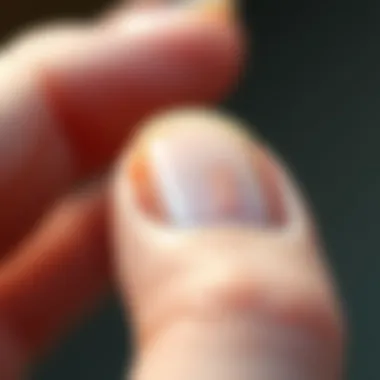
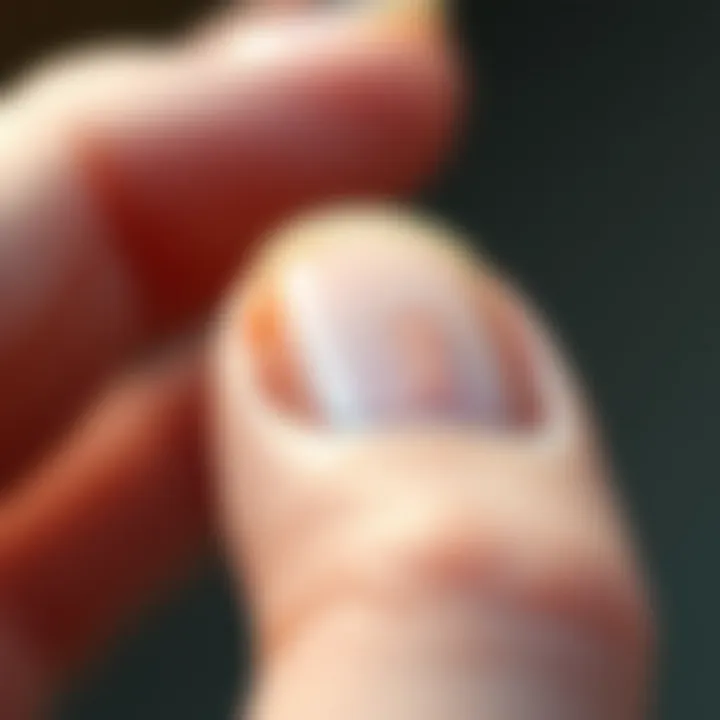
Intro
Nails often serve as an unassuming canvas, but the different lines and patterns that decorate them can reveal much more than one might expect. While the beauty world continuously churns out the latest trends in nail art and designs, it is crucial to remember that your nails tell a story about your overall health too. From ridges to discolorations, the marks on your nails can shed light on nutritional deficiencies, stress levels, and even systemic health issues.
In this guide, we will explore the meaning behind various nail lines, unpacking their aesthetic and health implications. Understanding these nuances can empower women across all walks of life to take control of their well-being, and perhaps even spark an interest in the ever-evolving intersection of health and beauty trends.
Let's dive deeper into what your nails might be saying and decode the visual language they present.
Prelude to Nail Lines
Nail lines, often overlooked, are more than just surface patterns; they can reveal a wealth of information about one's health and well-being. In the hustle and bustle of daily life, many might focus on what’s on the surface, yet these subtle lines tell a deeper story. The understanding of nail lines encompasses both aesthetic considerations and health implications, making it a topic worthy of attention.
The nails serve as a canvas, painted with the experiences of our body. Whether they are strong and smooth or marked with lines and ridges, they act as a barometer for underlying health. This article will delve into the meaning behind these various lines, covering what each manifestation signifies and why it’s crucial to pay attention to them. Understanding these markings can lead to early detection of potential health issues and foster a more proactive approach in caring for one’s personal health.
The Significance of Nails
Nails do more than just enhance one’s appearance; they provide insight into overall health. Think of them as the canaries in the coal mine, signaling potential health concerns before they escalate. For instance, certain nail lines can hint at nutritional deficiencies or even systemic health issues. From an aesthetic viewpoint, well-maintained nails reflect personal grooming and style, which is often linked to self-esteem and social perception. Therefore, it’s paramount to appreciate the dual role nails play in our lives.
A quick examination can reveal a lot, often more than a routine doctor’s visit might catch in its early stages. When we learn to recognize the nuances of nail lines, we can take meaningful strides towards ensuring our well-being. The old saying "the devil is in the details" rings true here; dismissing these micro details may lead us to overlook important signs that could benefit our health in the long run.
Common Types of Nail Lines
There are several types of lines that might make an appearance on the nails, each telling its own unique story. Here are some common ones:
- Ridges: Often appearing as vertical lines, ridges may suggest aging or underlying health conditions.
- Horizontal Lines: Known as Beau's lines, these can indicate prior health disruptions, such as significant illness or nutritional changes.
- Colored Lines: Lines with varying pigmentation may signal infections or other systemic issues that require attention.
Each of these markers conveys a message—or rather, a memo from your body. It’s vital to pay attention to these cues and seek professional advice when necessary. Knowing the common types can empower individuals to advocate for their own health and lead them on a journey of discovery about their own bodies. By keeping abreast of nail health, one not only embraces beauty but also nurtures longevity.
Understanding Horizontal Lines
When it comes to our nails, horizontal lines speak volumes about various aspects of our health. These lines aren’t just a cosmetic concern; they convey significant information about physical conditions that often lurk beneath the surface, unnoticed until manifested in our nails. The presence of these lines can indicate issues ranging from nutritional deficiencies to more serious health problems, making it crucial for individuals to pay attention to what their nails are telling them. So, let’s dive deeper into the types of horizontal lines that often appear and why they matter.
Beau's Lines
Beau's lines are perhaps the most well-known type of horizontal line found on nails. Named after the French physician Joseph Beau, these grooves usually present as indentations that run across the nail. They can be shallow or quite prominent, and their appearance is often tied to a period of physiological stress or illness.
When the body goes through significant events – such as a severe illness, surgical procedures, or even extreme weight loss – the growth of nails can temporarily slow down or stop, resulting in these visible lines as new growth eventually resumes. However, more than just a cosmetic issue, Beau's lines can hint at a range of underlying health situations. For instance, diabetes, peripheral vascular disease, or even chemotherapy treatment can lead to the emergence of these lines.
Importantly, the presence of Beau's lines should prompt not just an aesthetic concern, but also a health check-up. Keeping regular tabs on changes not only in nails but in overall health can lead to early detections of issues that might need attention.
Causes and Implications
The causes of horizontal lines on nails are diverse and often reveal critical implications for overall health. Conditions that may lead to the development of horizontal lines include:
- Trauma: Physical injury to the nail matrix can cause ridges to appear.
- Illness: Various systemic diseases, such as kidney disease or heart problems, can affect nail growth.
- Nutritional Deficiencies: Lack of essential vitamins or minerals, particularly zinc or protein, can rule the growth cycle of the nail.
- Medications: Specific treatments can result in temporary halting of nail growth due to their effects on the body.
By understanding these implications, individuals can make informed decisions regarding their health. Monitoring changes in nail texture could serve as an early warning system, signaling when something might be off in the body.
“Nails are often mirrors of our overall health; horizontal lines may serve as critical indicators.”
In summary, paying attention to the horizontal lines in your nails provides insights into your health. They might seem like mere cosmetic flaws, but they can serve as a bridge to understanding deeper health issues at play. Listening to what your nails are indicating can be a step towards taking charge of one’s health.
Investigation into Vertical Ridges
The exploration of vertical ridges on nails is a crucial aspect of understanding nail health. These lines are more than just superficial markings; they can potentially provide insights into one's overall health. Vertical ridges might suggest underlying nutritional deficiencies or other systemic concerns. Their presence can serve as a subtle but significant indicator for both patients and health professionals alike. By examining these ridges, one can delve into the interconnectedness of nail health and body health, promoting a more comprehensive approach to well-being.
Nature of Vertical Lines
Vertical ridges, often aligned from the cuticle to the tip of the nail, can vary in prominence, depth, and color. Some people may notice thin, barely-there lines, while others might have more pronounced features. In many cases, these lines can be just a natural occurrence of aging. However, they can also signify more complex issues.
The biological mechanism behind vertical lines may involve changes in nail matrix growth, influenced by factors such as age, genetics, and overall health. As individuals age, their nails often undergo changes, including the development of these ridges. From a cosmetic perspective, they might be perceived as a sign of elegance or maturity, but they can also evoke concern among those who are more health-conscious.
"Nails can tell a story; every ridge can be a chapter in your health history."
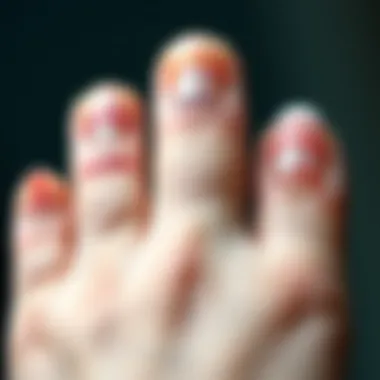
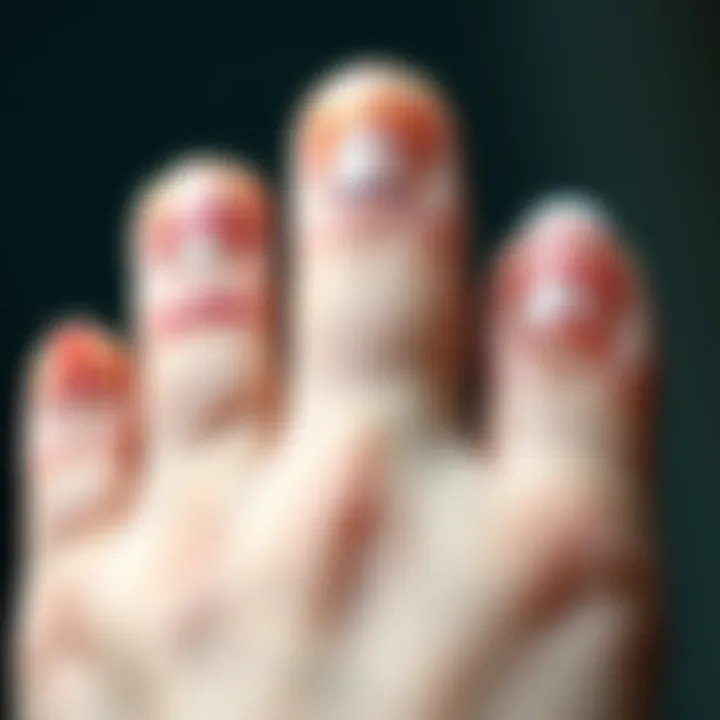
Further investigation is warranted when these ridges suddenly become more prominent or change in appearance. If any drastic alterations occur, it's wise to explore the root causes.
Associated Health Concerns
Vertical ridges can hint at various health issues. While they're often benign and linked solely to the aging process, there are instances where these lines may alert us to more serious conditions.
- Nutritional Deficiencies: Deficiencies in vitamins such as B12 or iron can lead to the development of these ridges. A well-balanced diet is vital for nail health, just as it is for the rest of the body.
- Dehydration: Nails, like skin, benefit from adequate hydration. Lack of moisture can lead to brittle nails and prominent ridges.
- Health Conditions: Conditions like thyroid disease or psoriasis may also manifest through changes in nail texture and appearance. Maintaining good communication with a healthcare provider and mentioning such changes can aid early detection.
In summary, while vertical ridges are often harmless, they should not be brushed aside. Monitoring their evolution and correlating them with other health indicators can provide vital clues for overall health maintenance.
Colored Lines and Their Meanings
Understanding the significance of colored lines on nails is essential for anyone interested in health and aesthetics. These lines, which can manifest in various hues, not only serve as a canvas for personal expression but also as indicators of internal health. The brilliance of these pigments can sometimes mask underlying issues, and knowing what they could signify helps in maintaining overall well-being.
Colored lines can signal nutrient deficiencies, hormonal imbalances, or even the presence of systemic diseases. Thus, they deserve our attention. Certain colors can easily correlate with specific health conditions, making it vital for individuals to observe any sudden changes in their nail appearance.
"Nails can tell more than just a beauty story; they whisper secrets about your health."
Understanding Pigmented Lines
Pigmented lines are often a result of various conditions affecting the nail matrix. We might see them ranging from red, brown, to even black streaks. Each of these colors can have a distinct meaning. For example, a bluish tint may indicate a lack of oxygen in the blood, a concern that should not be ignored. Similarly, brown lines could hint at melanoma, a type of skin cancer that often shows its first signs on the nails.
Here are some common types of colored lines and their meanings:
- Red Lines: Can signify circulatory issues or infections.
- Brown Lines: Might indicate more serious conditions, such as fungal infections or melanoma.
- White Lines: Often associated with nutritional deficiencies or kidney issues.
- Greenish Discoloration: Frequently linked with bacterial infections.
Observing these colors is the first step; understanding their implications is the next.
Potential Health Issues Signified
Not all colored lines are alarming, but their presence warrants further investigation. A casual observer may simply appreciate the aesthetic, missing out on the telling signs that those pigments hold. For instance, faint white lines could suggest a lack of essential nutrients, while deep grooves of darker shades may hint at systemic health problems.
When looking at nails, paying attention goes beyond vanity.
Some noteworthy issues tied to nail discoloration include:
- Nutritional Deficiencies: Insufficient intake of proteins, vitamins, and minerals can lead to distinct changes in nail color.
- Liver Problems: A greenish hue could signal liver dysfunction, as toxins build up in the body.
- Heart Conditions: Red streaks often point to circulatory issues, which may require immediate medical evaluation.
- Skin Cancers: As mentioned, pigmentation changes can sometimes reveal skin malignancies, so a dermatologist’s visit may be prudent when changes occur.
Being proactive about nail health and recognizing the implications of colored lines can foster better health outcomes. It’s always better to err on the side of caution, digging deeper into what the nail’s appearance might be trying to communicate.
The Role of Nutritional Factors
Nutritional factors play a pivotal role in the health and appearance of our nails. Just like every other aspect of our health, what we consume directly reflects on our body's external features, including nails. Nails are often considered the mirrors of our overall health. They can signal deficiencies or problems in our diet, and understanding this connection is essential for maintaining their strength and beauty.
A balanced diet is not just a matter of fitness; it’s also vital for maintaining healthy nails. Nutrients such as protein, vitamins, and minerals are key players in nail integrity. When our body lacks essential nutrients, we may notice changes in our nails, like brittleness, discoloration, or unusual lines. Therefore, paying attention to what we eat can lead to better nail health and, in turn, enhance our overall well-being.
Impact of Diet on Nail Health
Diet is intertwined with nail quality. Proteins, particularly keratin – the primary component of nails – are crucial. A deficiency of protein can lead to weak and thin nails. Foods rich in protein, like chicken, fish, eggs, and legumes, should be staples in our diets if we aim for strong nails.
Additionally, vitamins such as biotin, vitamin E, and zinc, serve important functions. For instance, biotin promotes nail growth and improves strength. Research shows that biotin supplementation can significantly increase nail thickness and reduce splitting. Foods like bananas, nuts, and oats are great sources of biotin, which can make your nails look better over time.
A well-rounded diet doesn't just keep our bodies functioning; it reflects on how healthy our nails appear. Healthy and well-nourished nails indicate a body in good shape.
Moreover, hydration plays a significant role in nail health. Nails can become dry and brittle if we don't drink enough water. Incorporating water-rich foods, such as cucumbers and watermelon, can also keep our nails hydrated from the inside out.
Daily Nutritional Needs
When discussing daily nutritional needs for optimal nail health, it's important to focus on key elements.
- Proteins: Aim for at least 46 grams of protein daily for women and 56 grams for men through a variety of sources:
- Vitamins: Ensure you’re getting enough of the following:
- Minerals: Iron and calcium are crucial as well. Including foods like spinach, broccoli, and dairy can help maintain adequate levels of these vital minerals.
- Hydration: Drink at least 8 cups of water daily. This might increase if you're active or live in a hotter climate. Add hydrating foods to your meals for extra benefits.
- Lean meats like turkey and chicken
- Fish, rich in omega-3 fatty acids, which have been beneficial for nail health
- Eggs and dairy products
- Plant-based sources like beans and lentils
- Biotin: 30 micrograms per day
- Vitamin E: 15 milligrams per day
- Zinc: Around 8 milligrams for women and 11 milligrams for men
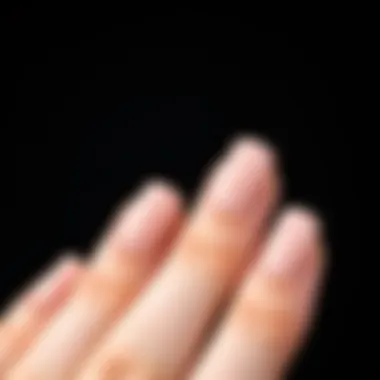
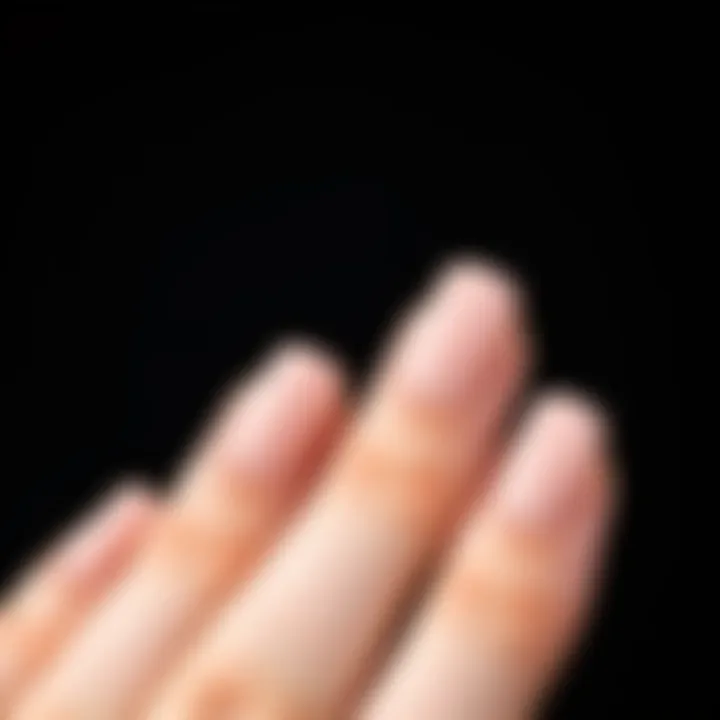
Maintaining a balanced and nutrient-rich diet can significantly enhance not just nail appearance but all aspects of health. It’s wise to consult with a healthcare provider or nutritionist to assess individual needs and make necessary adjustments to one’s diet.
Infection and Nail Condition
Understanding how infections affect nails is crucial for recognizing signs of health issues. Nail conditions, linked closely to infections, can often indicate underlying systemic problems. When we discuss nail health, we mustn't overlook the risks posed by fungal and bacterial infections. These infections can influence not just the appearance of nails but also their overall health, making it essential to catch any abnormalities early.
Fungal Infections in Nails
Fungal infections can be a nail’s worst enemy. They usually start unnoticed, creeping in and wreaking havoc. The most common type of fungal infection affecting nails is onychomycosis, which can lead to thickening, discoloration, and even nail loss in severe cases. This occurs when fungi invade the nail bed, often thriving in warm, moist environments.
Signs to watch for include:
- Discoloration: Nails may appear yellow, green, or even white.
- Thickening or crumbling: The nail can become brittle, making it difficult to maintain.
- Separation: Infection may cause the nail to detach from the nail bed.
Why pay attention? Fungal infections can become more problematic over time and may spread to other nails or even to surrounding skin. Particularly for women, if one nail becomes infected, treating it promptly helps avoid broader issues that could impact beauty and self-esteem.
"Ignoring nail infections can lead to extensive damage, costing you more than just your nails."
Signs of Bacterial Contamination
While often overshadowed by fungal concerns, bacterial contamination poses just as serious a risk to nail health. Bacteria like Staphylococcus can invade injuries in or around the nails, leading to infections that can be quite painful.
Common indicators of bacterial infection include:
- Pus formation: Visible discharge around the nail.
- Swelling and redness: Breakouts indicating inflammation.
- Severe pain: This can stem from the infection and sometimes spread to the surrounding skin.
Infections can often be mistaken for other conditions, making it important to seek professional help if you suspect contamination. Ignoring these signs can lead to serious complications, sometimes pushing a simple infection to a point that merits medical intervention.
Understanding the differences between these two types of infections will empower you, ensuring the health and vitality of your nails remains uncompromised. Regular checks and early intervention can help maintain not just beautiful looking nails but also contribute to overall health.
Genetic Factors in Nail Appearance
When discussing the significance of nail lines, one cannot overlook the role of genetics. Understanding the familial patterns and hereditary influences can provide invaluable clues about nail health. In this context, some individuals may notice recurring issues, like ridges or discolorations, even within the same lineage. This connection often reflects various genetics-based factors, relating to both physical and health characteristics.
Hereditary influences may affect the strength, thickness, and overall appearance of nails. Family traits often lead to similarities in nail structures. For instance, if your grandmother had brittle nails, there is a chance that you may experience similar issues due to shared genetic markers. These patterns paint a broad picture of one’s nail health and can prompt discussions about preventative care that begin at home.
Hereditary Patterns in Nail Health
Nail health does not exist in a bubble; it’s often a reflection of our genetic makeup. Several research studies indicate that nail conditions might be more prevalent in certain families. A person might inherit abnormalities such as pitting—a condition where small dents appear on the nail surface, or onycholysis, where the nail separates from the nail bed.
Moreover, nail shape and growth patterns can also inherit familial traits. People may notice similarities in nail curvature or even color, which could range from typical hues to more unusual shades indicative of underlying health disorders.
"Understanding these hereditary patterns is fundamental in recognizing whether nail issues are merely cosmetic or require medical attention."
Long-term Observation
Keeping an eye on nail changes over the years can provide essential hints about genetic influences. A longitudinal approach can help you identify these changes and differentiate between normal variations and alarming transformations. For example, if you’ve observed that changes in your nails coincide with how your family’s nails have behaved over time, that's a noteworthy point.
Furthermore, longstanding nail issues could emerge as potential warning signals of deeper health concerns. By observing nail health regularly, you might notice more than just aesthetic shifts; it can help track developmental anomalies or deteriorating conditions.
Monitoring tools can assist in this endeavor. Simple methods, such as keeping a nail diary that catalogs these observations, can lead to better insights into inherited nail conditions. Research suggests that understanding these genetic factors leads to tailored skincare routines that can promote improved nail durability.
Psychological Aspects and Nail Health
When we think about nail health, the focus often lies on physical aspects—strength, polish, and cleanliness. However, the relationship between psychological states and nail conditions is not to be overlooked. Our nails act like windows to our emotional condition. This section dives into how psychological factors, particularly stress and compulsive behaviors like nail biting, weave into the fabric of nail health. Understanding this connection can foster better care and acceptance, providing a holistic approach to self-wellness.
Effects of Stress on Nails
Stress can manifest in our bodies in unexpected ways. For many, it shows up in our nails. When faced with tensions—whether from work, relationships, or personal challenges—nail health may decline. Stress can lead to brittle nails, discoloration, or even an increase in nail ridges. The mind-body connection means that emotional disturbance can physically alter the appearance of our nails.
Additionally, stress may result in individuals unconsciously engaging in nail-related habits such as scratching or picking, which may worsen nail health. Consider these points:
- Nail Brittle: High-pressure situations can lead to dehydration of nails, making them more prone to cracking.
- Nail Discoloration: Anxiety can trigger physical reactions, resulting in blood flow changes and affecting nail color.
- Ridges and Grooves: Prolonged periods of stress may cause the nails to grow unevenly, showcasing lines that reflect emotional upheaval.
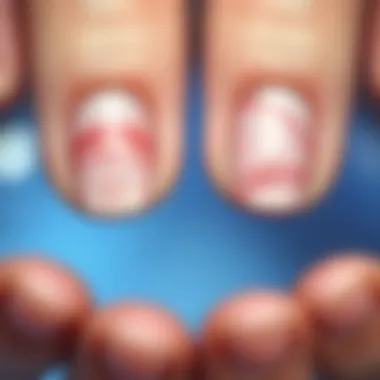
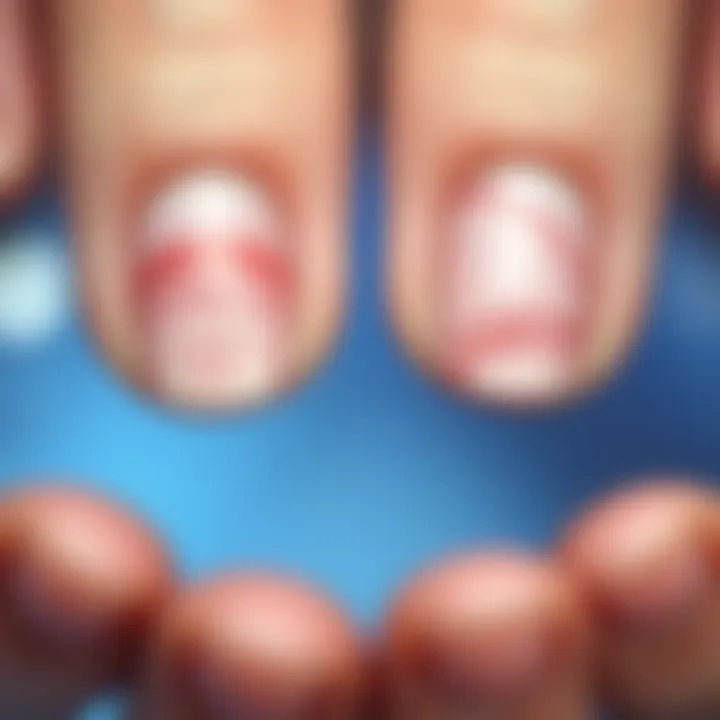
Understanding these effects urges one to not only seek solutions to nail care but also to address underlying psychological issues. By managing stress, whether through yoga, meditation, or therapy, one might find significant improvement in the health of their nails as well.
Nail Biting: A Psychological Compulsion
Nail biting, or onychophagia, is more than just a bad habit; it's often a coping mechanism rooted in psychological discomfort. People tend to bite their nails during moments of stress, anxiety, or boredom. The behavior can trigger feelings of shame and frustration, creating a cycle that can be hard to break.
Here’s why nail biting matters:
- Emotional Release: For some, nail biting provides a momentary sense of relief from anxiety. The act can distract the mind and channel nervous energy.
- Physical Damage: Beyond the aesthetic concerns, regular biting can lead to infections or deformities in the nail structure, producing long-lasting damage.
- Habitual Nature: Once developed, this compulsion can be difficult to overcome. Stress management techniques can help, but they require conscious effort and time.
To combat the habit of nail biting, it’s crucial to understand its roots. Keeping nails trimmed, using bitter-tasting nail polish, or occupying hands with stress balls can help mitigate the urge to bite. Recognizing the triggers and addressing them directly can pave the way for both mental and physical healing.
"Nails might seem insignificant, but they reflect more about our inner selves than we realize."
For further insights on psychology as it relates to bodily expressions, you can explore resources on Wikipedia or engage in discussions on platforms like Reddit.
Professional Insights on Nail Care
Professional insights into nail care serve as a vital resource for anyone wishing to maintain or improve their nail health. These insights come not only from dermatologists and podiatrists but also from beauticians and nail technicians. Although everyone has their own set of habits regarding nail care, these professionals provide an evidence-based approach that can really make a difference in how nails appear and function.
Understanding the nuances of nail care can shed light on various health issues that may arise. For instance, nail professionals often observe the first signs of a fungal infection or onset of a nutritional deficiency in clients. This proactive approach highlights the importance of getting routine assessments done by specialists. Recognizing that nails can tell a story about the body's overall health emphasizes why professional guidance is highly recommended.
"A beautiful set of nails is not just about aesthetics; it can be a reflection of your inner health and well-being."
In this context, professional insights often cover various aspects such as:
- The importance of keeping nails clean and dry to prevent infections.
- Understanding which products to use for strengthening nails and safeguarding against damage.
- Techniques and tools for optimal nail care.
Furthermore, recognizing issues such as discoloration, ridges, or other abnormalities can lead to early treatment for underlying health problems.
Expert Recommendations
Experts suggest implementing a comprehensive home care routine. This includes using quality nail products and the right techniques that are applicable to different nail types. Here are some recommendations:
- Regular moisturizing: A good quality cuticle oil can go a long way. It keeps cuticles hydrated and nourished, preventing peeling and cracking.
- Limit exposure to water: Prolonged exposure to water can weaken nails. Whenever possible, wearing gloves during chores can help maintain nail integrity.
- Choose safe nail products: Look for polishes and removers that are free from harmful chemicals. Products that contain formaldehyde or toluene can adversely affect nail health.
- Stay mindful of diet: A balanced diet laden with vitamins and minerals like biotin, iron, and zinc significantly contributes to nail strength and growth. Incorporate leafy greens, nuts, and lean proteins for optimal nail health.
Preventive Measures
To keep nails in excellent condition, preventive measures should not be overlooked. Below are common strategies:
- Regular trimming: Keeping nails well-trimmed helps to avoid snags and splits.
- File gently: Using a glass file rather than an emery board can reduce fraying and promote smoother edges.
- Protective nail polish: Consider using a clear base coat which acts as a barrier between your natural nail and nail polish, reducing damage to the nail itself.
In essence, integrating professional insights into your routine can lead to noticeable improvements in nail appearance and health. While some people may not prioritize their nails, the underlying messages they convey about one's health status cannot be underestimated.
For further reading on nail care, consider visiting reputable resources such as WebMD or American Academy of Dermatology. This way, you stay updated on best practices and emerging research on nails.
Epilogue: The Takeaway from Nail Observations
As we draw the curtain on this exploration of nail lines, it’s crucial to underscore the real-world implications these observations can have on our well-being. Nails, seemingly minor in the grand scheme of health, serve as telltale indicators of one’s internal state. Each line and mark tells a story that might otherwise go unnoticed. Therefore, paying attention to these details can greatly enhance our understanding of body signals and overall health.
Integrating Nail Health into Overall Well-Being
Integrating nail health into one’s overall well-being involves looking at them not just as an aesthetic concern but as a reflection of a person’s health status. For instance, a sudden appearance of Beau's lines might hint at previous illness or stress endured health-wise. Similarly, changes in the color nuance might signify deficiencies or fungal infections.
By observing these signs closely, women can adopt more conscious lifestyles. Regular monitoring encourages one to seek professional advice when needed. This can foster a proactive approach towards health, making early detection of potential disorders possible. Here are various points to consider:
- Maintain a Balanced Diet: Foods rich in vitamins, such as biotin and vitamin E, contribute to healthier nails.
- Stay Hydrated: Regular water intake can prevent dryness and brittleness.
- Avoid Harmful Chemicals: Using gentler nail products reduces the chances of damage.
Through simple changes and heightened awareness, one can significantly improve their nail health, which may ripple through to their overall well-being.
Future of Nail Care Research
Looking ahead, the frontier of nail care research is a lively one. With growing interest, scientists and health experts are channeling resources into understanding nail lines and their connection to broader health issues. Advances may lead to better screening tools for detecting nutritional deficiencies, fungal infections, or even chronic health conditions based on nail observations.
Some emerging areas of study include:
- Technological Integration: New apps and gadgets can track nail health over time, allowing women to document changes accurately.
- Genetic Research: As understanding of genetics improves, researchers might pinpoint hereditary conditions linked to nail appearance.
- Nutritional Studies: Investigations focused on how specific diets influence nail health could yield beneficial insights.
With these potential advancements in understanding, it’s evident that attention to nails can be a stepping stone to holistic health assessments. As the research landscape evolves, there’s optimism about a future where nail lines serve as crucial allies in our quest for long-term health.







